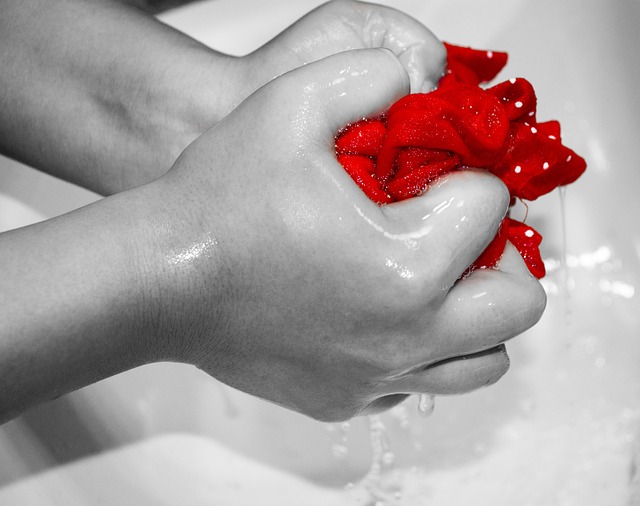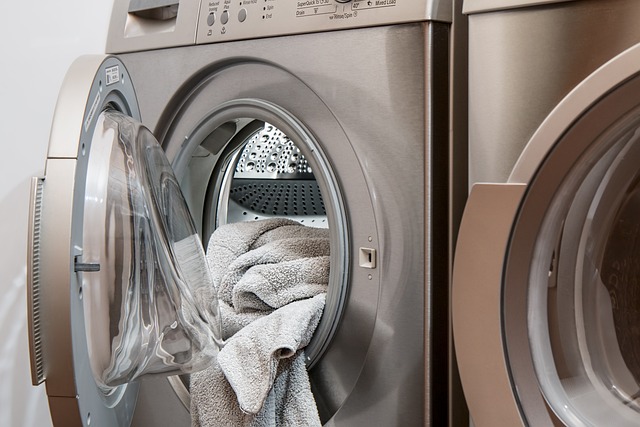As an Amazon Associate I earn from qualifying purchases.
 To wash clothes by hand, you will need a basin or bucket, detergent, and a washboard or scrub brush (if available). Here is a basic step-by-step guide:
To wash clothes by hand, you will need a basin or bucket, detergent, and a washboard or scrub brush (if available). Here is a basic step-by-step guide:
Sort The Clothes by Color and Type of Fabric
Yes, it’s important to sort clothes by color and type of fabric before washing them by hand. This is because different colors and types of fabric have different care requirements and can be affected differently by detergents and water temperatures.
For example, white clothes should be washed separately from colored clothes to prevent dye transfer. Delicate fabrics like silk or lace should also be washed separately and with a gentler detergent to prevent damage. Heavy fabrics like denim or canvas can be washed with other heavy fabrics and with a more heavy-duty detergent.
Sorting clothes before washing will also help to prevent colors from bleeding or fading, and can prolong the life of your clothes.
Fill The Basin or Bucket with Warm Water and Add Detergent According to The Manufacturer’s Instructions
Yes, you should fill the basin or bucket with warm water and add detergent according to the manufacturer’s instructions. The water temperature and amount of detergent can affect the cleaning power and can also damage or discolor the clothes.
Warm water is generally best for removing dirt and stains, but it can also cause colors to bleed or shrink certain fabrics. Cold water can be used for delicate fabrics or clothes with bright colors to prevent dye transfer or shrinkage.
When adding detergent, be sure to follow the manufacturer’s instructions for the amount to use, as using too much detergent can cause excess suds, which can make it difficult to rinse the clothes thoroughly and can also cause skin irritation.
Using the right amount of detergent and water temperature will help to ensure that your clothes are cleaned effectively without causing damage.
Submerge The Clothes in The Water and Use Your Hands or A Washboard or Scrub Brush to Agitate the Fabric and Work in The Detergent
Yes, once you have filled the basin or bucket with warm water and added the detergent, you should submerge the clothes in the water and use your hands or a washboard or scrub brush to agitate the fabric and work in the detergent.
This will help to loosen dirt and stains, and ensure that the detergent is distributed evenly throughout the clothes. The use of your hands or a washboard or scrub brush is the most effective way of getting the detergent to penetrate the fibers of the fabric, which will help to remove dirt, stains and odors.
When using your hands, you can rub the fabric together, or use a circular motion to massage the detergent into the fabric. The washboard or scrub brush can be used to scrub the fabric, and is particularly useful for removing tough stains.
It is important not to overdo it as it can cause shrinkage or damage to the fabric. Depending on the type of fabric, it is recommended to let the clothes soak for a bit (5-10 minutes) before starting the agitation process.
Continue To Wash the Clothes for About 5-10 Minutes, Or Until They Appear Clean
Yes, you should continue to wash the clothes for about 5-10 minutes, or until they appear clean. The length of time you need to wash the clothes will depend on the type of fabric, the amount of dirt and stains, and the water temperature.
During this time, you should continue to agitate the clothes and work in the detergent. You can also use a washboard or scrub brush to help remove tough stains. This will help to ensure that the clothes are thoroughly cleaned.
When the clothes appear clean, you can stop washing them. It’s important to note that some stains and dirt may require extra attention and more time to be completely removed.
It’s also important to keep an eye on the water, if it becomes too dirty, it is best to replace it with clean water so that the clothes can be rinsed effectively.
Drain The Dirty Water and Refill the Basin or Bucket with Clean Water. Use This Water to Rinse the Clothes Thoroughly, Making Sure to Remove All Traces of Detergent
Yes, it’s important to drain the dirty water and refill the basin or bucket with clean water to rinse the clothes thoroughly, making sure to remove all traces of detergent.
Rinsing the clothes in clean water will help to remove any remaining dirt, stains, and detergent residue, which can cause skin irritation or leave a residue on the clothes that can cause them to feel stiff or look dull.
To rinse the clothes, simply submerge them in the clean water and agitate them for a few minutes. Make sure to rinse them thoroughly until the water is clear and free of suds.
It’s important to rinse the clothes completely, as any remaining detergent can cause skin irritation or leave a residue on the clothes that can cause them to feel stiff or look dull. You can also use a washboard or scrub brush to help remove any remaining dirt or stains.
It’s also important to repeat the rinsing process if you notice any suds or bubbles in the water, which would indicate that the clothes are not fully rinsed.
Once The Clothes Are Rinsed, Wring Them Out by Hand to Remove as Much Water as Possible
Yes, once the clothes are rinsed, it’s important to wring them out by hand to remove as much water as possible before hanging them to dry. This will help to speed up the drying process and prevent any stretching or shrinking of the clothes.
To wring out the clothes, you can gently twist the fabric or use a wringer if you have one. It’s important to be gentle with the clothes and avoid twisting or wringing them too roughly, as this can cause shrinkage or damage to the fabric.
You can also use a towel to press the water out of the clothes by rolling the clothes in a towel and pressing it gently.
It’s important to note that certain delicate fabrics such as silk or lace should be handled with care, wring them gently or lay them flat to dry to prevent damage.
Once you’ve wrung out as much water as possible, the clothes should be hung up to dry in a sunny and windy place, or laid flat on a towel. This will help to ensure that the clothes dry quickly and evenly, preventing any shrinkage or stretching of the fabric.
Hang The Clothes to Dry in A Sunny and Windy Place, Or Dry Them with A Towel
Yes, once the clothes have been wrung out, they should be hung to dry in a sunny and windy place, as the sun and wind can help to kill bacteria and freshen the clothes. Hanging clothes in direct sunlight can also help to remove any remaining stains and odors.
If you don’t have access to a sunny and windy place, you can also dry clothes with a towel. Simply lay the clothes flat on a clean, dry towel and roll them up like a burrito, pressing out as much water as possible.
When hanging clothes to dry, it’s important to use a clothesline or drying rack that is wide enough and strong enough to hold the clothes without stretching or damaging them. Avoid hanging delicate fabrics or clothes with embellishments, as the weight of the water can cause them to stretch or lose their shape.
It’s also important to keep the clothes separated and avoid overcrowding the clothesline or drying rack to ensure that the clothes dry evenly and quickly.
It’s important to note that some fabrics will take longer to dry than others, and it’s best to check the clothes periodically to see if they are dry and ready to be folded or ironed.
Note
Remember to be gentle with the clothes and avoid twisting or wringing them too roughly, as this can cause shrinkage or damage to the fabric.
Amazon and the Amazon logo are trademarks of Amazon.com, Inc, or its affiliates.




